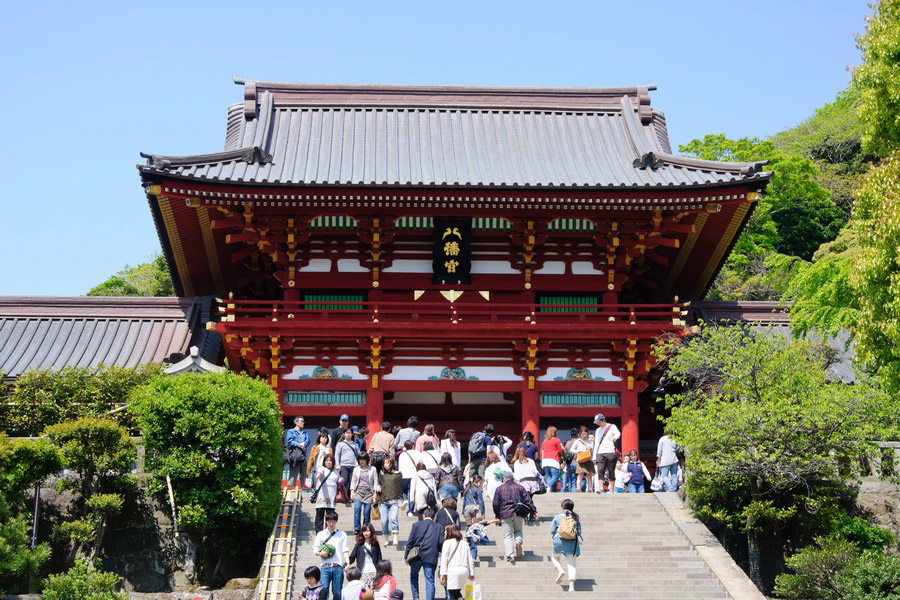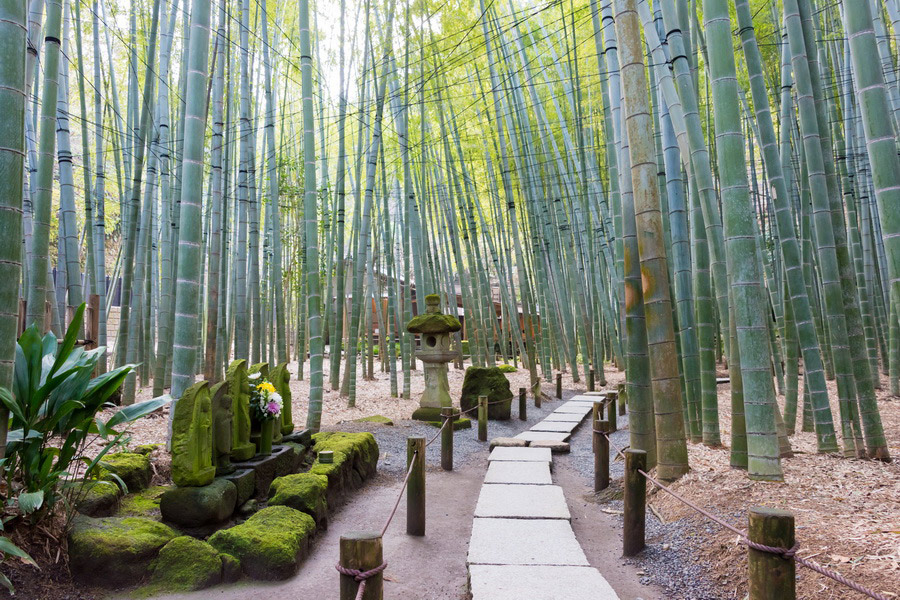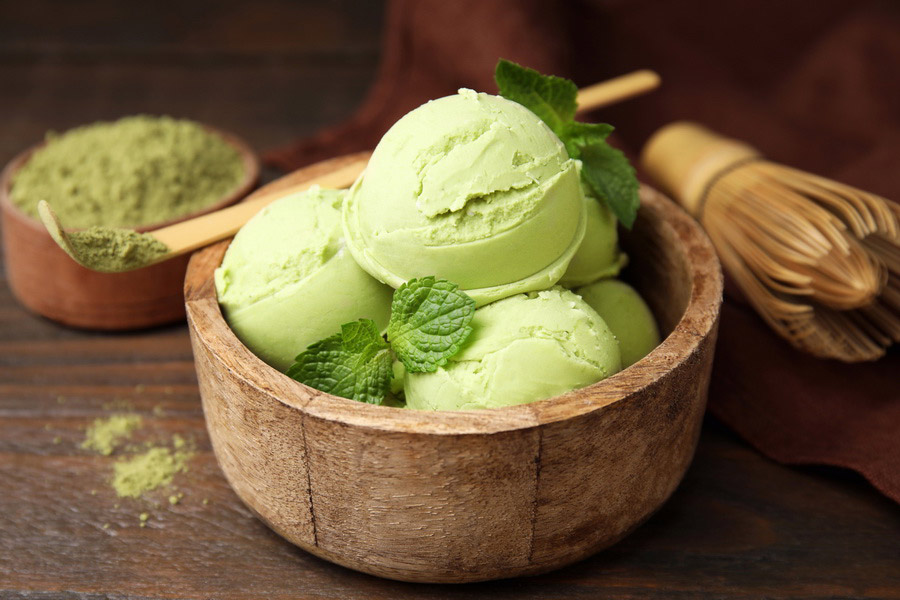Tours, Attractions and Things to Do in Kamakura
Kamakura Travel Guide
Kamakura (鎌倉, officially Kamakura City) is one of Japan’s top tourist destinations—a small city with a population of less than 200,000 and an area of around 40 km2. Despite its size, which is roughly 50 times smaller than Tokyo and 30 times smaller than New York, Kamakura is at the height of its popularity among tourists, including many Japanese. Every year, millions of people travel to visit this breathtaking natural scenery, as well as to explore the history, culture, and religion of traditional Japan. The city’s most iconic landmark is the 11,3-metre-tall Great Buddha Kōtoku-in (高徳院) statue.
Explore this Kamakura travel guide for all you need to plan an unforgettable trip, from must-see attractions and activities to iconic temples and shrines, as well as delicious local food to try. You will undoubtedly find out that Kamakura is worth visiting.
Kamakura Tours
Kamakura can be visited as part of a group excursion or individually. Kamakura tours usually begin in major cities, with guides and transportation provided.
The main types of Kamakura tours include:
- Religious tours generally last one day and focus on the holy sites of Buddhism and Shintoism. Kamakura is also a destination integrated in longer pilgrimage tours to Japan's sacred places.
- Beach tours include visits to Kamakura’s three beaches and excursions may be programmed to nearby Enoshima Island, known for its beach, marina, and lighthouse with observation deck.
- Cultural tours include trips to museums and cultural events, such as the popular festivals held at Tsurugaoka Hachimangū Shrine.
- Hiking tours. Kamakura’s stunning nature, with its wooded mountainous landscapes, makes it an ideal destination for long hikes.
- Gastronomic and shopping tours. The city boasts a variety of Japanese restaurants and the famous Komachi-Dori shopping street, where visitors may shop clothes and souvenirs.
History of Kamakura
Kamakura’s history stretches back almost a thousand years, having been founded in the 12th century by Minamoto no Yoritomo, a prominent Japanese ruler, the first shogun, who established the city as the capital and a major political centre. Its importance during this time was so great that it gave its name to an entire era in Japanese history—the Kamakura Period (1185-1333). Following the decline of the state created by Minamoto in the 14th century, Kamakura fell into disrepair and remained largely neglected for over 500 years. Its revival began in the late 19th century during the Meiji Era (1868–1912).
Things to Do in Kamakura
Landmarks and Attractions in Kamakura

Kamakura’s proximity to major metropolitan areas, especially Tokyo (less than an hour away), has made it a popular weekend and short break destination for Tokyoites and residents of nearby Yokohama. The city’s beautiful natural surroundings and rich cultural heritage have unlocked its tourism potential. Surrounded on three sides by wooded hills and located on the coast, Kamakura offers more than 140 tourist attractions, according to Kanagawa Prefecture data.
Kamakura’s main attractions:
- Shinto and Buddhist temples and shrines;
- Museums of literature, national treasures, and modern art;
- A variety of cafes and restaurants serving traditional Japanese cuisine.
Temples and Shrines

Kamakura is home to many temples and shrines, the most important are:
- The Great Buddha (Daibutsu). This bronze statue, one of the city’s oldest structures, is part of the Kotoku-in temple complex. The 11,3-metre-high, 121-ton statue depicts a seated Amitābha Buddha, who is highly revered in the Buddhist Amidism tradition. It has become a symbol of Kamakura and a must-visit site for tourists.
- Kannon Statue at Hasedera Temple. This 9,18-meter-tall, gilded statue, made of camphor wood, is the largest wooden statue in Japan. It represents Kannon, the Goddess of Mercy, and is believed to have been created in 721 AD. According to the legend, the statue was sent to the ocean with prayer to save people elsewhere and eventually found its home in Kamakura.
- Tsurugaoka Hachimangu Shrine. The city’s main Shinto shrine, built in honour of Hachiman, the God of War, protector, and patron deity of samurai. This active shrine is frequently visited by locals for wedding rituals and the “Shichi-Go-San” a rite of passage festival for coming of age.
- Zeniarai Benten Shrine. Known for its “money-making” after performing the “coin-washing” ritual, where visitors wash money in the holy water of the spring to symbolically increase their wealth. According to the legend, the amount of money washed in the sacred spring will double.
Other notable shrines include Engaku-ji Temple, Kencho-ji Temple, and Hokoku-ji Temple, which is famous for its tranquil bamboo forest.
Kamakura Beaches

Beach tourism in Kamakura is as popular as religious tourism. Due to its scenic coastline and relaxed atmosphere, Kamakura is often called "Japan's California".
The beach season begins in mid-July, after the rainy season, and lasts for about three months.
During this time, tourists can enjoy Kamakura's three best beaches:
- Yuigahama. The most popular beach, where visitors can sunbathe and attend events such as the famous Live House Otodama music festival.
- Inamuragasaki. The most picturesque beach, often used as a film set for Japanese movies.
- Shichirigahama. The least crowded beach, mainly favoured by surfers. The best surfing conditions are from March to May and in October, when the wind creates ideal waves. In summer, the waves are smaller and perfect for beginners.
Kamakura Museums
Kamakura is home to numerous museums, craft centers, studios, and art galleries, showcasing thousands of exhibits that explore the city's rich history, literature, and art. The three most important Kamakura museums are:
- Kamakura and Hayama Museum of Modern Art. Kanagawa Prefecture's first museum of contemporary painting, sculpture, and graphics, opened over 70 years ago. It houses around 16,000 works by Japanese artists. The museum is named after its two locations, one in Kamakura and the other in the nearby town of Hayama.
- Literature Museum. A small museum located in the former Maeda family villa. It displays manuscripts and documents of famous people who lived and worked in Kamakura, including Nobel laureate Yasunari Kawabata and the famed director Yasujirō Ozu, whose film Tokyo Story is considered a masterpiece of world cinema.
- Museum of National Treasures. With around 4,800 historical artefacts from the 12th to the 16th centuries, this museum offers a deep dive into Kamakura’s cultural heritage.
Entertainment, Parks, and Shopping in Kamakura

Kamakura Hiking Trails
Hiking is very popular in Kamakura, with several trails connecting the city's main temples while allowing visitors to explore the stunning rocky landscapes, often referred to as the Kamakura Alps. These trails offer a fantastic opportunity to enjoy both the natural beauty and the historical significance of the ancient city.
The most famous hiking route is the Daibutsu hiking Trail, a 6-kilometre path through scenic areas, where you can visit several temples and shrines. Another popular trail, Asaina Sunken Pass, captures the energy of Kamakura's ancient culture.
The Shakado Rocks Path has a distinct atmosphere, while the Tenen Hiking Trail offers two observation decks with spectacular views of the ocean and, on clear days, Mount Fuji in the distance.
Parks of Kamakura
Kamakura has several parks, including Central Park, Chuo Park, Fufuike Park, and the well-known Genjiyama Park, which has a statue of Minamoto no Yoritomo, the city's founder. These parks are especially popular in late March and early April, when cherry blossoms are in full bloom and various events and festivals take place.
Additionally, the coastlines of Inamuragasaki and Yuigahama beaches provide an opportunity to enjoy both mountain and sea views.
Shopping in Kamakura
Kamakura shopping is centred around its charming, crowded streets lined with tiny artisan boutiques selling souvenirs, clothing, housewares, and delicious Japanese street food.
The main shopping street of Kamakura is Komachi-Dori, a must-visit for locals and tourists alike. Another notable street is Ofuna Nakadori, which is less crowded but offers a variety of shops. For modern shopping, visitors can head to Kamakura Ofuna Lumine Wing, a large shopping complex in the northern part of the city.
Kamakura Food Guide

In Kamakura, as in other Japanese cities, seafood plays a major role in the local cuisine. Given the city's proximity to the ocean, the freshness of the seafood is guaranteed. Additionally, Shōjin ryōri, a Buddhist vegetarian cuisine, is also popular. Kamakura offers a range of dining options, from affordable street food to high-end restaurants.
What to Eat in Kamakura?
Some iconic local snacks you shouldn't miss include:
- Daibutsuyaki – small gingerbread cookies shaped like the head of Great Buddha, Kamakura's main iconic symbol.
- Croquettes – small fried balls with either meat or sweet fillings. In Kamakura, ensure to try the sweet version.
- Skewered snacks – a variety of treats on bamboo skewers, ranging from rice flour dango sweets to fried octopus.
- Matcha-flavoured ice cream – a classic Japanese treat, available at special stalls throughout the city.
For a more refined dining experience, head to restaurants serving traditional Japanese cuisine, many of which also offer stunning ocean views. A must-try dish in Kamakura is Shirasu, made from boiled fish fry freshly caught from the local shores.
How to Get to Kamakura

The best way to get to Kamakura is by train from nearby cities such as Tokyo or Yokohama. Many tourists choose to visit Kamakura after exploring these larger cities.
The fastest route to Kamakura from Tokyo is the JR Yokosuka Line train, which also goes through Yokohama. The trip from Tokyo to Kamakura takes about 60 minutes and costs approximately 10 USD. If you're travelling from Yokohama, the journey is shorter—around 30 minutes—and costs roughly 5 USD.
Kamakura has two train stations: Kita-Kamakura and Kamakura. It's generally recommended to get off at Kamakura Station, as most of the city's attractions are nearby. However, if you're planning to visit northern temples like Engaku-ji or Tōkei-ji, Kita-Kamakura Station may be more convenient.
You can also reach Kamakura from the international airports Haneda (HND) and Narita (NRT). It's a 2-hour drive from Haneda and a 3-hour drive from Narita. Naval Air Facility Atsugi Airport (NJA/RJTA) is the closest domestic airport, just 28 kilometres away, making Kamakura accessible in less than an hour.
Getting Around Kamakura
Kamakura is compact, making it easy to explore most attractions on foot. For faster transportation, many buses operate, and bicycles are available for rent. And for a more fun memorable experience, why not tour the city on a jinrikisha (rickshaw)?
A unique option is the Shonan Monorail, which connects Kamakura to the nearby island of Enoshima. Operating since 1970, it was Japan's first suspended monorail. The scenic ride takes about 15 minutes and includes six stops.
Security in Kamakura

Like many cities in Japan, Kamakura is very safe for tourists. This is due to several factors:
- Polite and respectful locals. The crime rate in Kamakura is extremely low, thanks to the residents' decency and politeness.
- Visible police presence. Officers routinely patrol the streets, to maintain order and assist visitors with directions or other requirements.
- Reliable mobile connectivity and free Wi-Fi. Tourists can access uninterrupted mobile service and free Wi-Fi in most public spaces, making it easy to use maps, guides, and contact family or friends if necessary.
- Clear signposts. Directional signage in both Japanese and English helps visitors avoid getting lost.
- Countless accommodation options. Kamakura has several hotels, so if you decide to stay overnight, you can do so in a secure and comfortable environment.
However, it’s important to be aware of the typhoon season, which typically occurs between June and October, with the most activity happening in August and September. During this time, heavy rains and strong winds can affect travel plans, so it’s advisable to check weather forecasts regularly and stay updated on any potential disruptions.
Kamakura is a city that combines Japan’s rich history with modern conveniences. It offers an immersive experience of the country’s natural beauty, blending ancient traditions with modernity to provide visitors with a memorable and secure stay.


